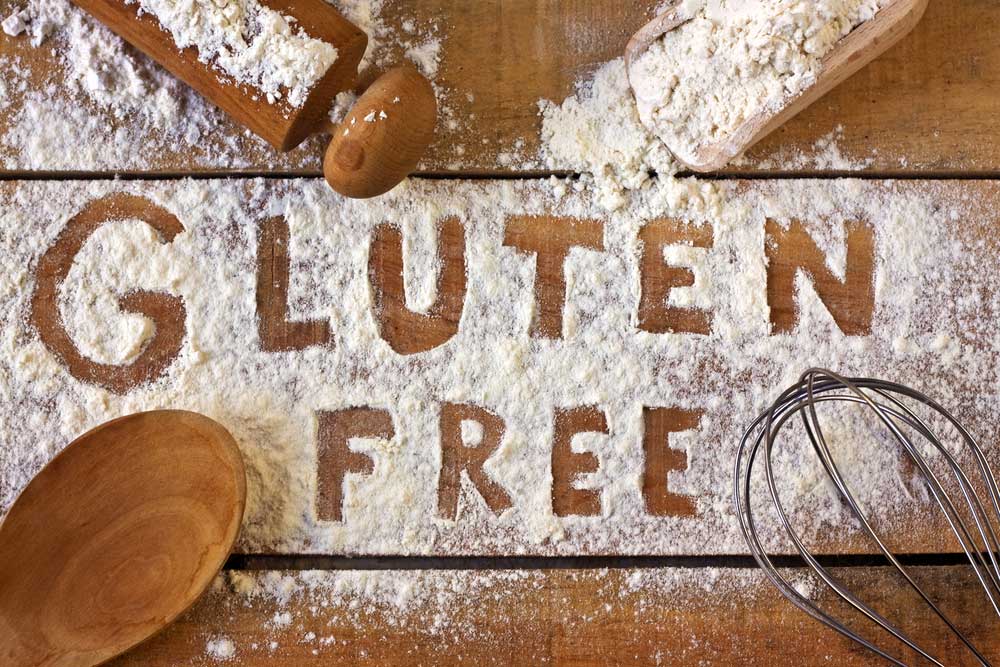Many people may ask what is coeliac disease and why do some people need to eat gluten free?
In recent years, restaurants, supermarkets and cafes have improved the availability and awareness of gluten-free products.
People with coeliac disease are forced to eat strictly gluten-free diets in order to eliminate gastrointestinal symptoms and discomfort. However, there are some people that eat gluten free because of perceived health benefits.
What is coeliac disease?
People with coeliac disease have an immune system that reacts abnormally to gluten.
This causes the lining of the bowels to become inflamed and flattened, which reduces the surface area of the bowels that is available to absorb nutrients.
This leads to a range of gastrointestinal symptoms.
What is gluten?
According to Coeliac Australia, gluten is a protein that is found in wheat, rye, barley and oats.
How common is coeliac disease?
It is estimated that 1 in 70 Australians have coeliac disease but the vast majority of them are undiagnosed.
This means about 80 per cent of people with coeliac disease don’t actually know they have it.
Interestingly, the number of people with coeliac disease has increased in recent years, not just because of the increased awareness of the condition, but also because of a real increase in the incidence of coeliac disease.
Can coeliac disease be cured?
Currently there is no medical treatment for coeliac disease. That’s why maintaining a strict gluten-free diet is so important, as it’s the only way to control the symptoms of the disease.
Switching to a gluten-free diet allows people with coeliac disease to repair the lining of the bowels and will stop the symptoms. However, you can’t cure coeliac disease for good with a gluten-free diet.
Not all gluten intolerance is a sign of coeliac disease
Many people complain of symptoms such as bloating, diarrhea, abdominal pain, excessive wind, lethargy and poor concentration after eating or drinking gluten.
They may remove gluten from the diets and feel better but this does not necessarily mean you have coeliac disease. You can speak to your doctor for more information.
How to eat gluten free
Some foods are naturally gluten free. These include fresh fruit and vegetables, fresh meat, eggs, nuts, legumes, milk, rice and corn.
Due to the increased prevalence of gluten intolerance, many products that previously contained gluten, such as pasta and bread, now come in gluten free alternatives.
If you’re not sure whether a product contains gluten, you can check the label. If any of the ingredients are derived from wheat, rye, barley or oats, then this must be declared on the ingredients panel.
Australia has some of the strictest gluten standards but there has been some issues flagged in study House Call Doctor wrote about. If there is a risk of cross contamination, a product will say ‘may contain gluten’.
How to cook for someone who eats gluten free
For a person with coeliac disease, ingesting as little as 50mg of gluten can damage their small intestines. This can cause pain and discomfort. This is the equivalent of 1/100th of a slice of bread.
It’s critical that all ingredients, including garnishes, sauces and dressings are gluten free.
Some gluten free cooking ideas:
- Barbecues are great because there are gluten-free sausages, rissoles and beef patties available
- Salads can easily be paired with gluten-free salad dressings
- Roasts are another great option. Make sure to use a gluten-free gravy mix and double check that any glazes, coatings or stuffings are also gluten free
- When baking, you can use a packet of gluten-free cake mix. However, be sure not to dust the pan with regular flour or use an icing that contains gluten.
If you need more questions answered about what is coeliac disease or suspect that you or your child has it, it is important to book an appointment with your health care professional.





